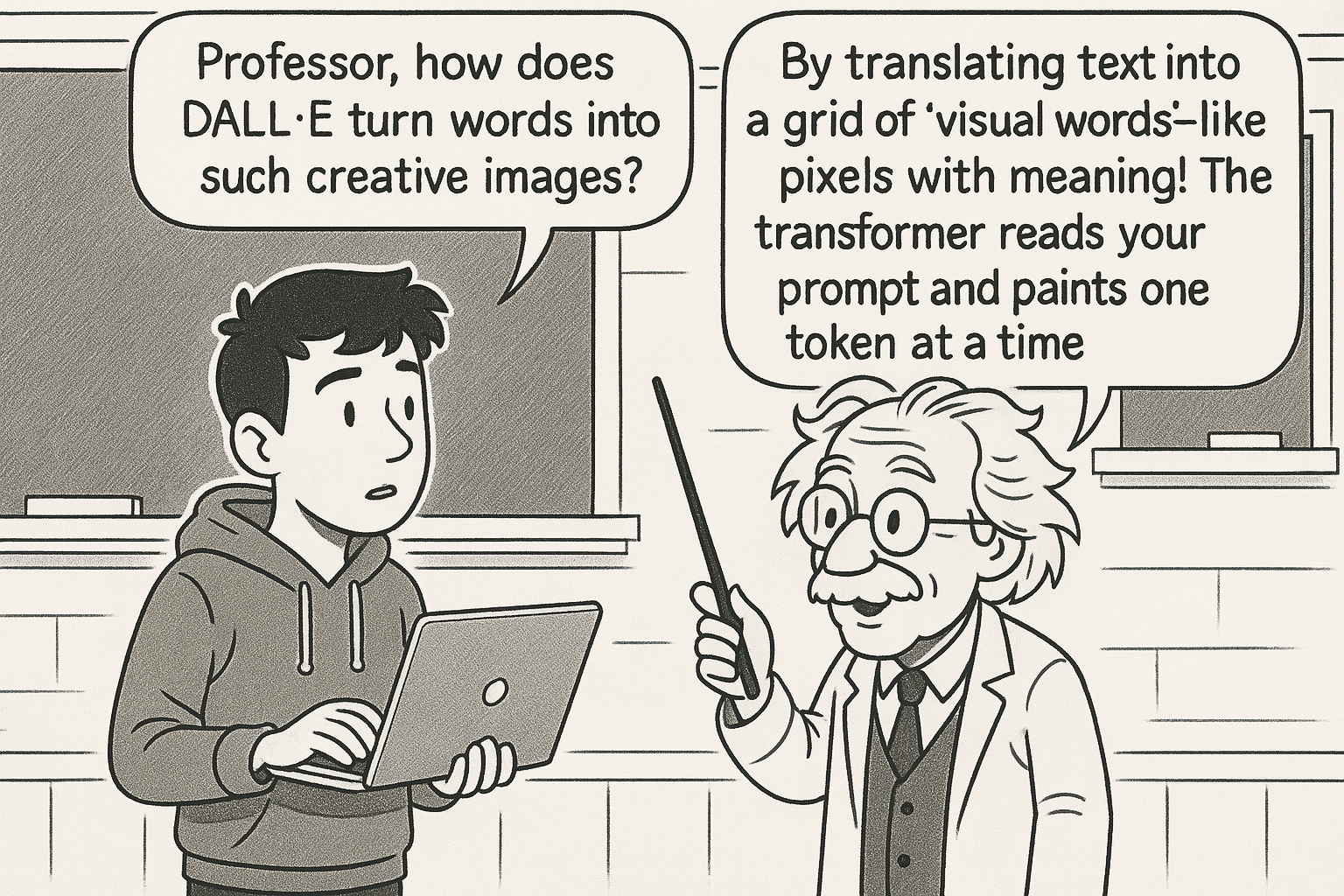Introduction
In February 2021, OpenAI published "Zero-Shot Text-to-Image Generation," introducing DALL-E, a groundbreaking neural network that creates images directly from textual descriptions. Unlike traditional text-to-image models that required complex architectures and auxiliary losses, DALL-E uses a simple approach based on a transformer that autoregressively models text and image tokens as a single stream of data. This research paper, led by Aditya Ramesh and colleagues, demonstrated that with sufficient data and scale, a unified approach could compete with specialised domain-specific models in zero-shot fashion, marking a significant milestone in generative AI.
Core Ideas
DALL-E employs a two-stage training process to tackle the fundamental challenge of jointly modelling text and images. The first stage involves training a discrete Variational AutoEncoder (dVAE) that serves as the visual vocabulary builder. This dVAE compresses each 256×256 RGB image into a 32×32 grid of discrete image tokens, where each position can assume one of 8192 possible values. This compression reduces the transformer's context size by a factor of 192 whilst maintaining visual quality, making the training computationally feasible.
The dVAE differs from traditional VAEs by operating in a discrete latent space, similar to VQ-VAE but using distribution sampling instead of nearest neighbour matching. The model uses Gumbel-Softmax distribution to enable discrete sampling whilst maintaining differentiability through the reparameterisation trick. This allows the network to learn categorical representations of visual patterns rather than continuous embeddings.
The second stage trains a massive 12-billion parameter autoregressive transformer to model the joint distribution between text and image tokens. The transformer receives 256 BPE-encoded text tokens concatenated with 1024 image tokens, creating a single stream of 1280 tokens that it models autoregressively. The attention mechanism allows each image token to attend to all text tokens, whilst text tokens follow standard causal masking.
The training dataset comprised 250 million text-image pairs collected from the internet, incorporating Conceptual Captions, Wikipedia text-image pairs, and a filtered subset of YFCC100M. This scale enabled the model to learn rich associations between textual descriptions and visual patterns across diverse domains.
"Simple transformers can bridge language and vision by treating images as sequences of learnable visual tokens."
Breaking Down the Key Concepts
Think of DALL-E as a highly sophisticated translator that converts between two different languages: human text and visual information. The dVAE functions like a compression algorithm for images, similar to how we might represent a complex photograph using a grid of colour codes. Instead of storing millions of pixel values, it learns to represent images using just 1024 carefully chosen "visual words" from a vocabulary of 8192 possibilities.
The transformer component works like an extremely advanced autocomplete system. Just as your phone might predict the next word when typing a message, DALL-E predicts the next visual token when given a text prompt. However, instead of completing sentences, it completes images by learning patterns like "when someone writes 'red apple,' the visual tokens that typically follow represent round, red, fruit-like shapes."
The discrete token approach is crucial because it allows the same neural architecture (transformers) that excelled at language tasks to work seamlessly with images. By converting continuous pixel values into discrete tokens, DALL-E bridges the gap between text processing and image generation using a unified mathematical framework.

Results and Significance
DALL-E achieved remarkable performance on the MS-COCO dataset, with human evaluators preferring its outputs over previous state-of-the-art models 90% of the time for both realism and caption matching. The model obtained FID scores within 2 points of the best prior approaches on MS-COCO, demonstrating competitive image quality.
This research represents a fundamental shift in how we approach multimodal AI systems. DALL-E showed that transformers, already successful for language tasks, could be effectively adapted for visual generation with proper tokenisation strategies. This has directly influenced modern text-to-image systems and opened new possibilities for creative AI applications in digital art, advertising, and content creation industries.
The model exhibited emergent capabilities not explicitly trained for, including image-to-image translation tasks and analogical reasoning similar to Raven's progressive matrices. DALL-E could independently control object attributes, arrangements, lighting conditions, and viewing angles, functioning somewhat like a natural language interface to a 3D rendering engine.
The research validated the scaling hypothesis for multimodal systems, demonstrating that increasing model size, data, and compute resources leads to qualitative improvements in generation quality and zero-shot generalisation capabilities. This finding has shaped subsequent research directions in generative AI, influencing models like DALL-E 2, Stable Diffusion, and Midjourney.
Read the full paper here - https://proceedings.mlr.press/v139/ramesh21a.html